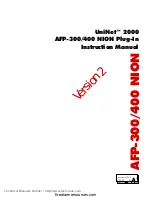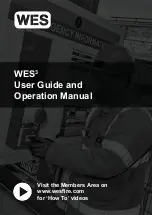
7
Document 51996 AFP-300/400 NION Installation Rev. A1 03/04/03
Foreword
The contents of this manual are important and must be kept in close proximity of the hardware. If building owner-
ship is changed, this manual and all other testing and maintenance information must also be passed to the current
owner of the facility. A copy of this manual was shipped with the equipment and is also available from the manu-
facturer.
This equipment has been designed to comply with standards set forth by the following regulatory agencies:
NFPA Standards
•
National Fire Protection Association Standards 72.
•
National Electric Code (NFPA 70).
•
Life Safety Code (NFPA 101).
Underwriters Laboratories U.S. Documents
•
UL-864 Control Units for Fire Protective Signaling Systems.
•
UL-1076 Proprietary Burglar Alarm Units and Systems.
Other
•
Requirements of the Local Authority Having Jurisdiction (LAHJ).
WARNING:
WARNING:
WARNING:
WARNING:
WARNING: Improper installation, maintenance, and lack of routine testing could result in system malfunction.
Introduction
The AFP-300/400 NION is a plug-in component of the UniNet Workstation. It allows a workstation to view events
and other data originating from the AFP-300 or AFP-400 fire alarm control panels.
UniNet consists of graphical workstations monitoring and controlling local or remote twisted pair or fiber optic
networks. Remote network monitoring is achieved through the use of a Building Communications Interface (BCI),
which has a maximum capacity of 32 nodes. Each Local Area Server (LAS) has a maximum capacity of 200
nodes, using twisted pair or fiber-optic cabling. A twisted pair network topology (FT-10) may be a maximum length
of 6000 feet per network segment with no T-taps, allowing communications between 64 nodes in each segment.
In addition, FT-10 allows dedicated runs of 8000 feet point-to-point or multiple T-taps within 1500 feet of any
other node on the segment. Fiber-optic cable runs can be configured in either a bus or ring topology. The
network is supervised for shorts, opens and node failures as dictated in Style 4 wiring.
The network power is 24 VDC nominal and receives operating power from a power limited, filtered source listed for
use with fire protective signaling units.
Technical Manuals Online! - http://www.tech-man.com
firealarmresources.com


































